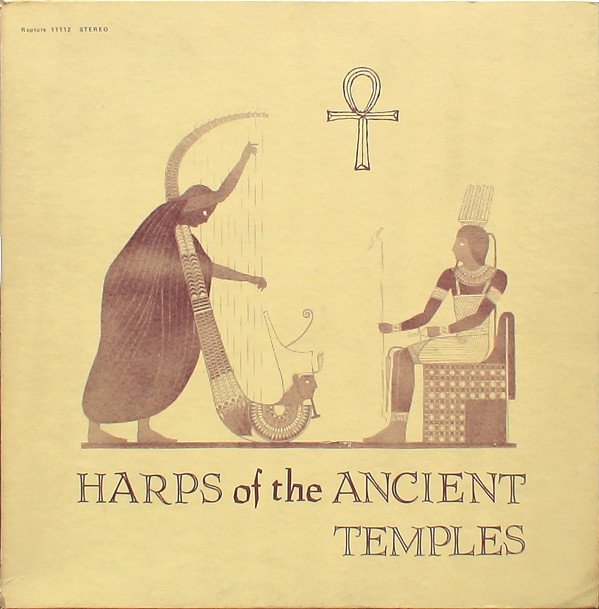
You might already know Gail Laughton from the inclusion of “Pompeii 76 A.D.” in the canonical I Am The Center compilation, or from the same track’s inclusion in the Blade Runner score. Alternately, if you’re big on 1940’s rom-com, you may have heard Laughton’s harp recording pantomimed by Cary Grant in The Bishop’s Wife—Laughton also instructed Grant in harp-syncing and apparently served as a body double for some close-up shots. Though Laughton worked in Hollywood and played on many cartoon and film soundtracks—John Wayne, Looney Tunes, etc.—Harps of the Ancient Temple was his only solo release, and a radical conceptual departure from his typical work.
Harps uses ancient sacred rituals, each catalogued by year and location, as jumping-off points for his neo-classical and heavily impressionist-influenced interpretations. “Japan 375 A.D.,” for example, seems to mimic a koto played in a Japanese pentatonic scale. Much of the record is exactly as pillowy and perfumey as you might hope for from a harp record that’s regularly slung around by new age devotees. Still, many tracks lean into dissonance and spin out ominously, building to what feels like like an unobstructed fall down a very long spiral staircase in the closing track, “Atlantis 21,000 B.C.” Lots going on here, but happily this works well for both active and passive listening. Fans of Joel Andrews will appreciate this, and similarly it’s cloaked in a dense hiss of room tone.
only just found this a few weeks ago myself… slightly oppressive in parts, quietly meditative in others.
With my lifelong friend Dave, I had the privilege of briefly hearing Gail Laughton play two harps – at the same time! – in his living room in Los Angeles by invitation of the recording engineer for this album (and electronic music pioneer) Paul Beaver … a few decades ago; what a treat! 🙂